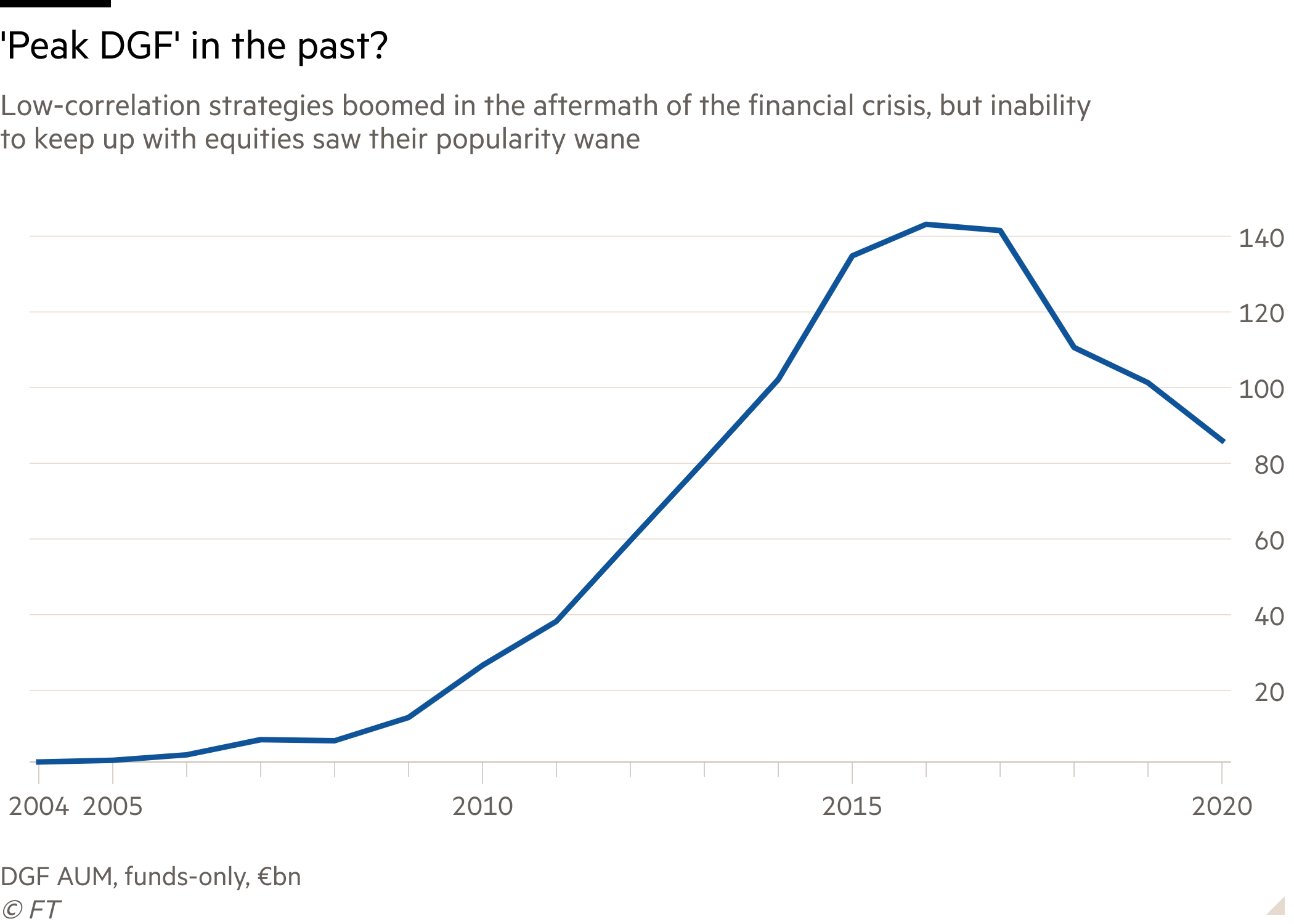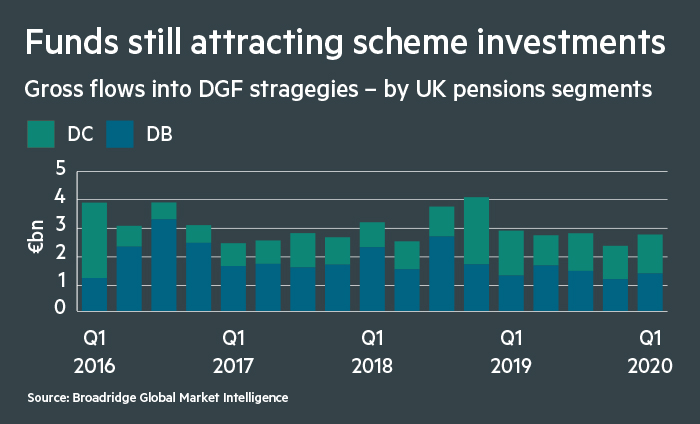Broadridge’s Hal La Thangue asks whether the ability of low-correlation diversified growth funds to shine through crises can save them from a tarnished reputation.
Although there is a great deal of variety within manager approaches, reflecting the idea that the DGF is more of a brand than anything else, all have a common goal: to deliver equity-like returns with reduced volatility by investing in a range of asset classes. Most have cash-plus return targets to mandate low correlation to markets.
After the financial crisis, DGFs benefitted as pensions looked for a means of diversifying their growth portfolios away from equities. A few strategies proved their mettle through the turmoil impressing scheme trustees.
The assets sitting in DGF approaches reached a peak in 2016, as illustrated by the below data - from Broadridge’s Global Market Intelligence platform - which tracks money managed in funds. However, after a rapid ascent, the DGF market has been in freefall for the last few years.

DGF strategies are at least partly responsible for this decline as many have failed to deliver on their promises. This has been marked by the struggles of a few blockbuster managers which have typically dominated the space – their losses having an over-weighted impact on the market.
However, a series of external factors are also at play across the UK second pillar pensions spectrum diminishing the allure of the DGF.
For corporate DB, closed and cashflow negative schemes are reconfiguring their portfolios looking to generate reliable, natural income to pay pensions. Growth portfolios are shrinking as a result.
Within the LGPS, pooling has increased the resources, scale and buying power of the underlying funds, giving them greater freedom to allocate to alternatives and reducing demand for multi-asset managers. A similar story is unfurling in the DC world as many schemes consolidate into master trusts.
Net flows tell a bleak story, but gross flows, which generally track fresh sales of DGFs, illustrate that plenty of schemes are still purchasing new strategies. Although activity has dropped since the market’s peak in 2016, there has been on average just under €3bn of quarterly gross flow in the years since. As the role of DB shrinks, it is being steadily supplanted by DC, where the segment’s rapid expansion is a boon. 
The volatility induced by Covid-19 has provided an opportunity for waning DGFs to prove their worth and their ability to ride out periods of uncertainty relatively unscathed.
A sub-segment of the universe, anchored to absolute returns and the preservation of capital above all else, on average performed well and mitigated a great deal of the losses in equity markets experienced at the height of the turmoil in March. Some even had positive performance.
Hal La Thangue is a senior consultant in the global insights team at Broadridge Analytics Solutions






















